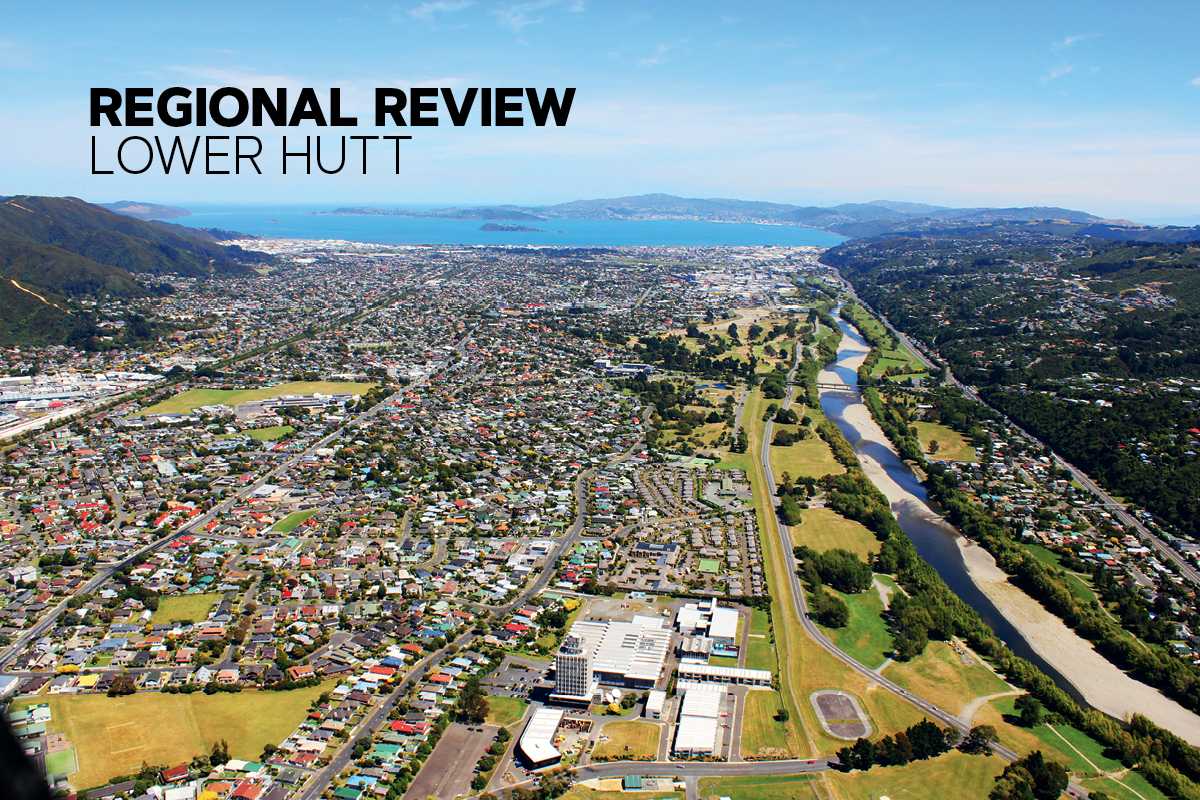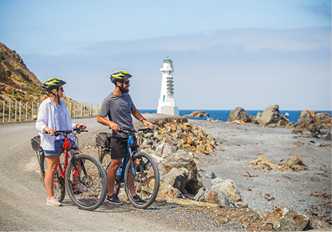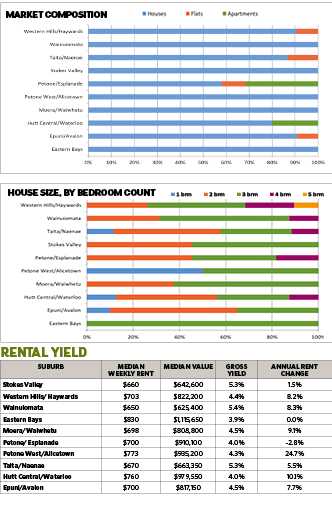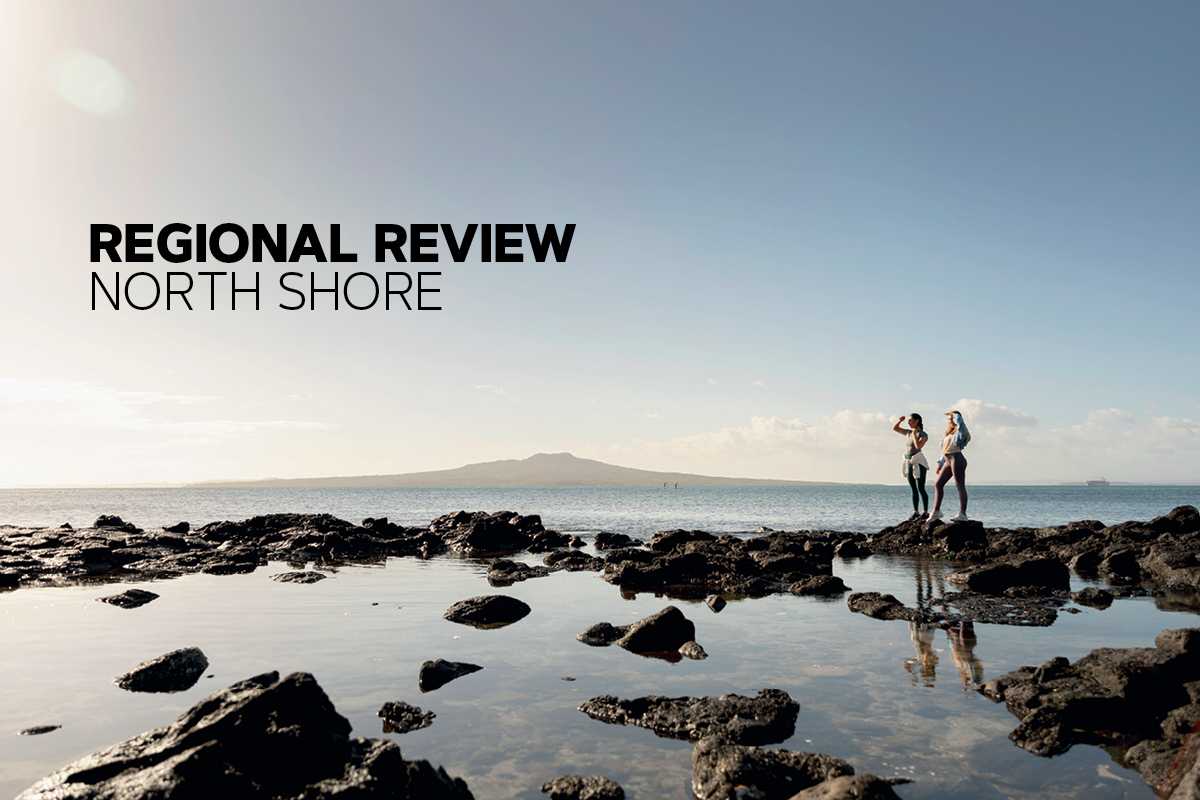
Eastern Opportunities
Lower Hutt, a mere 15 minutes east of Wellington city centre, is a prime choice for people looking for a mini metropolis, Sally Lindsay discovers.
21 March 2024
Lower Hutt has plenty of opportunities for those who can’t afford the big city but want to be close to Wellington.
With a population hitting 110,000 people, Lower Hutt on the eastern side of Wellington Harbour, has six swimming pools, eight libraries, more than 100 schools, 50 playgrounds, 25 parks, hundreds of kilometres of tracks and trails, the Hutt River and five regional parks.
It is easier to find cheaper property than in Wellington city: whether it be a home on a hill, an apartment by the water, or an easy-care flat. Bargains can be found in suburbs like Naenae, Taita and Wainuiomata.
Lower Hutt also has one of the finest examples of Brutalist architecture in the country: the monumental Avalon TV studios tower block, poking up from a sea of 1930s and 1940s bungalows like a giant concrete middle finger to the rest of the country. The 1970s-built wonder is being converted into one and two-bedroom apartments.
It also has acres of emerald hills, criss-crossed with hiking trails, and scenic walks, the glittering Hutt River, meandering Waiwhetu Stream, and flocks of native wildlife.
The forward-thinking council put a safe walking path up and over the Wainuiomata hill, with mountain-bike trails and a flyover walkway that leads to a sensational view over the mouth of Awa Kairangi to Somes Island, Wellington city and beyond.
On the dozens of beaches, terns and oystercatchers dart across the pebbles, and pipi spit bubbles in the silver sands. It also has a dog beach.
Good Quality Of Life
Ranked in the top 26 per cent of best places to live in the world and 10th best city to live in New Zealand, Lower Hutt is the ninth largest city in New Zealand.
A nationwide survey on quality of life within urban areas shows 88 per cent of respondents rated their overall quality of life as positive, 28 per cent felt their quality of life had dropped to some degree compared to the 12 months prior, while 24 per cent felt that their quality of life had increased. The main reason given to a perceived decrease in quality of life in Lower Hutt related to reduced financial well-being, reflecting a nationwide trend. About 80 per cent of respondents agreed their local area is a great place to live, sighting a high degree of positivity towards local amenities and building developments as the main reasons.
There are eight marae in the valley, which has some of the most beautiful homes in the region, tucked away down leafy drives, or sitting proudly at the head of a long looping road. It’s also dotted with railway cottages and some of the earliest state homes.
House prices across Lower Hutt have dropped from 3.9-0.5 per cent for the year ended January 1, this year, CoreLogic data shows.
The biggest drop was in Avalon were house prices fell 3.9 per cent from $752,700 to $723,500 followed by Maungaraki falling 3.8 per cent from $908,550 to $873,900 and Belmont where prices dropped by 3.4 per cent from $963,250 to $930,100.
At the other end of the scale, prices in Wainuiomata dipped only 0.6 per cent from $631,750 to $627,950, while in Fairfield they fell 2.7 per cent from $810,000 to $787,850 and in Stokes Valley prices dropped 2.9 per cent from $661,100 to $641,650.

ABOVE, CLOCKWISE FROM TOP LEFT A panorama of Lower Hutt and Wainuiomata; Te Awa Kairangi Hutt River, looking downstream; Days Bay Beach offers great summer swimming; Percy Scenic Reserve has a mix of tracks, lawns and gardens in a compact location; Dowse Art Museum is great for the whole family; Matiu/Somes Island in Wellington Harbour.
Demand Outstrips Supply
The dip in prices coincided with a 25 per cent drop in sales volumes last year from 2022.
Professionals NZ managing director John Ross, based in Lower Hutt, expects volumes to “pick up a bit” this year.
“We are doing more appraisals and seeing a bit more of an increase in the number of homes coming to the market, but nowhere enough to satisfy buyer demand.”
The strongest demand is for houses under $800,000, he says. “Anything listed in that price bracket will get between 15-30 potential buyers through on the first open home and an offer within a month. Anything reasonably well priced will sell within a month.”
Ross says the only reason properties stay on the market for longer is that it can take time for sellers to realise where the price really sits.
While Lower Hutt agents prefer to sell properties by tender or a deadline date, he says auctions are once again proving successful because of the shortage of houses for sale. “Even though auctions have dropped off, any we have done have had half a dozen buyers in the room. They are getting open market competition going.”
Ross says he is expecting changes to the Credit Contracts and Consumer Finance Act (CCCFA) eliminating the prescriptive affordability requirements for lower risk lending will improve the prospects for buyers.
“Although we don’t need any more buyers in the Lower Hutt market, the CCCFA has stopped some buyers from being in the market while prices have been suppressed.
“It’s been really hard for people who could well have bought at the bottom of the market, but the CCCFA hasn’t allowed them to,” he says. “When the changes finally come through, prices will have improved and there’ll be more buyers in the market competing with them.”
New Builds Abound
Buyers have a big choice in new builds – about 500 homes in Lower Hutt alone. Some are off-the-plan but there are about 150 finished homes available, Ross says. There is a mix of terrace, stand-alone and semi-detached properties, mostly two bedroom, some one bedroom and only a few larger homes.
Two-bedroom homes are proving popular, even for families with children, because they are entry level, affordable and it is a way to get into the housing market he says.
“Three-bedroom second-hand houses are still plentiful, and ‘very average’ liveable properties are selling for about $600,000.”
Buyers prefer homes in the Hutt Valley High School catchment. Beyond that it is driven by affordability, Ross says. “The further out, the more affordable it is for buyers.”
The high school zone caters for houses ranging in price from $1.4 million to $800,000 and less. He says, for example, on the hills the average price is $800,000, on the valley floor homes typically start at $1.4 million and on the other side of the railway tracks they drop back down to $800,000.
“It’s quite a distinctive zone because there is a huge mixture of house types from 100-year-old villas to contemporary new builds.”
He says while he expects sales and prices to increase slightly this year, he says the buyer base is conservative and take a little bit longer to get excited about an improving market.
Hampering the market will be the slump in developers buying infill land for housing. The council’s district plan has been focused on infill housing and Ross says hundreds have been built in the past five years, but it is slowing down fast.
“When prices were higher developers could outbid owner-occupiers. Now that new build sale prices are lower, the cost of building has gone up, design and resource consenting is often delayed, developers can’t afford the prices they once paid. They are mostly outbid by owner occupiers for a site/s. It means the Lower Hutt market is about to see a dent in the volume of homes being built.”
Investors Selling
Although Lower Hutt’s sales market has slowed considerably, the same cannot be said of the rental market.
Berrymans Property Management Lower Hutt and Wellington property manager Sandra Sygierycz says there are far more renters than houses available.
“It is a difficult situation, particularly when there are more investment properties than usual for sale. They will probably be removed from the rental pool when sold. In the past three months, three properties in the portfolio she manages have been sold.
Most of the sellers have been investors with one rental. “Many bought two to three years ago at the height of the market, have a mortgage and with higher interest rates and mortgage interest tax deductibility removed, they have had little choice but to sell,” Sygierycz says.
“Investors with multiple properties are not under so much mortgage pressure. They often sell but it is always because they are buying something new.”
She says the company is also seeing more people who cannot afford a mortgage and are going to be long-term tenants. “There are going to be more renters in the market and not enough houses.”

Eastbourne’s Pencarrow Coast has hiking trails and a lighthouse dating from 1859.
Days To Rent
The shortage is showing up in the number of days to rent – an average of two weeks, which Sygierycz says is now normal for most properties. About 30 people are turning up to viewings for every two or three bedroom property available. There is a little less interest for one-bedroom apartments or flats.
Lower Hutt has a mix of properties from one-bedroom apartments to five-bedroom houses. Rents are expected to rise. In Sygierycz’s opinion New Zealand rents are now at their highest point, compared to where they are in in Europe.
Typical rent for two-bedroom properties range from $550-750, depending on where it is and the standard. Three-bedroom houses, which are the most popular for Lower Hutt families rent for about $800, although Sygierycz rented one for $700 recently, which she says is exceptionally cheap. She says three-bedroom houses can rent at the same price as five-bedroom houses if they have a big section and are of a high standard in a good suburb.
Renters are clamouring after properties in Waterloo because it is close to the train station into the city and has more space for cars, compared to Lower Hutt central where there are plenty of rentals without carparks. Rentals without a carpark appeal mainly to a younger demographic, Sygierycz says.
Renters are being attracted to Lower Hutt because it’s cheaper to rent. While it’s half an hour to Wellington city by car, she says it can take the same time even from Karori in the city. Although renters will travel half an hour, it is still cheaper to rent than right in the city.

Corelogic Lower Hutt
Kelvin Davidson, Chief Property Economist
Market Composition
The rental market across Lower Hutt is dominated by houses. Of the 459 properties recently available on the market for rent, 399 have been houses (87 per cent), with 30 flats and 30 apartments, a touch less than 7 per cent each.
The largest market for flats has been Taita/Naenae, with 12, and six apiece in Western Hills/Haywards, Petone/Esplanade, and Epuni/Avalon. Meanwhile, the apartments have been concentrated in Petone/Esplanade (18), and Hutt Central/Waterloo (12).
Turning to houses, there’s been a good spread right across Lower Hutt, although Eastern Bays (6), Petone West/Alicetown (12), and Moera/Waiwhetu (24) have been less prominent. In several areas in Lower Hutt, houses have accounted for 100 per cent of properties recently available for rent, including Stokes Valley and Wainuiomata.
House Size, By Bedroom Count
Looking at the 399 houses recently for rent across Lower Hutt, only six have had five bedrooms, while 27 are in the one-bedroom category, spread across Taita/Naenae, Petone West/Alicetown, Hutt Central/Waterloo, and Epuni/Avalon.
The four-bedroom category is also comparatively small in Lower Hutt, only accounting for about 10 per cent of all houses recently available for rent. The most prominent market has been Western Hills/Haywards, with 12 properties, and 21 per cent of all houses recently available for rent in that area.
About 40 per cent of all houses recently for rent in Lower Hutt have had two bedrooms, with the largest numbers in Taita/Naenae (36) and Epuni/Avalon (33). Two-bedroom properties have accounted for more than half of all houses recently on the market for rent.
And finally for three-bedroom houses, most have been available in Wainuiomata (27), and Taita/Naenae and Western Hills/Haywards with 24 apiece. However, the highest concentration rates are in Eastern Bays (100 per cent) and Moera/Waiwhetu (63 per cent).

Rent And Yield
Matching average value to rent we can look at gross yield for three-bedroom houses in each area. Median weekly rents for three-bedroom houses across Lower Hutt range from $650 in Wainuiomata and $660 in Stokes Valley, up to $830 in Eastern Bays. There’s also quite a wide range for median values on these properties too, from about $625,000 in Wainuiomata up to almost $1.2 million for Eastern Bays. This results in a fairly wide range for gross rental yields, with Eastern Bays a touch under 4 per cent, but Wainuiomata up at 5.4 per cent, and also Stokes Valley and Taita/Naenae above 5 per cent.
Still, even at 4 per cent in Eastern Bays, those gross rental yields for three-bedroom houses are fairly attractive by national standards, with other parts of Lower Hutt potentially even more appealing, especially Petone West/Alicetown and Hutt Central/Waterloo, where rents have also been rising strongly.


